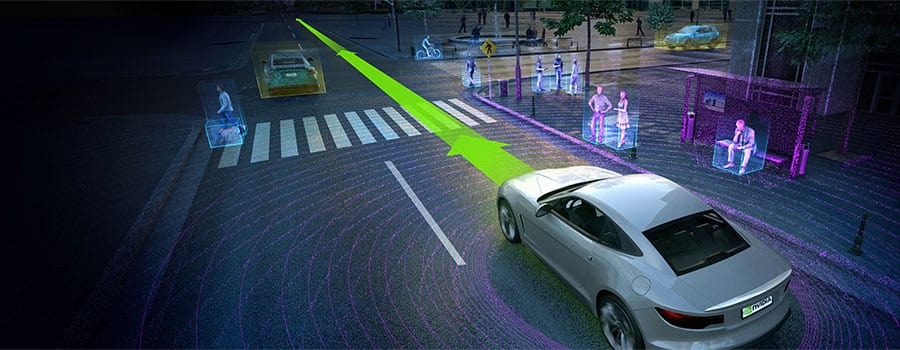After years of hype and inflated expectations, it’s clear that the mania around fully autonomous cars has cooled. In a refreshing, and much needed change, we’re starting to see companies like Nvidia, Intel/Mobileye, and Arm now talk much more about the opportunities to enable enhanced safety for occupants in cars supporting advanced technologies.
It’s not that the tech industry is giving up on autonomy—as recent announcements about new rounds of trials from Lyft, Uber, and others, as well as advanced new chip designs clearly illustrate—but the timeframes for commercial availability of these advancements are starting to get pushed out to more realistic mid-2020 or so dates. Even more importantly, the messaging coming from critical component players is shifting away from roads packed with Level 5 fully autonomous cars within a few years, to ways that consumers can feel more comfortable with and safer in semi-autonomous cars.
Over the last few weeks, Nvidia, Intel, and Arm have all discussed research reports and technology advancements in the automotive market that are focused primarily on security, with the technology providing a supporting role. Nvidia, for example, released a comprehensive study called “The Self-Driving Safety Report” that provides a view into how the company incorporates safety-related technology and thinking into all aspects of its automotive product developments. The report covers everything from AI-based design, to data collection and analysis, to simulation and testing tools, all within a context of safety-focused concerns.
Intel, for their part, released a comprehensive study on what they termed the Passenger Economy this past summer, but recently touted some findings from the report that focus on the relatively slow consumer acceptance for self-driving cars due to concerns around safety. Essentially, while 21% of US consumers say they’re ready for an autonomous car now, it’s going to be 50 years before 63% consumers believe they become the norm. To address some of these concerns, Intel is touting its Responsibility-Sensitive Safety (RSS) model, which it describes as a mathematical model for autonomous vehicle safety. The idea for RSS is to develop a set of industry standards for safety that can then be used to reassure consumers in a transparent way about how autonomous cars will function. Recently, Intel announced that Baidu had chosen to adopt the RSS model for its autonomous driving efforts in China.
Back in late September, Arm announced a new program called Safety Ready that ties together a number of the company’s security and safety technologies into a unified structure that, while not limited to the automotive market, is very well-suited for it. Safety Ready incorporates both chip IP designs and software that are focused on applications where functional safety is critical and allows the company to meet the key automotive-related functional safety certifications, including ISO 26262 and ASIL-D. At the same time, the company also introduced a new automotive-specific chip design called the Cortex-A76AE that integrates a capability called Split-Lock that allows a dual-core CPU to either function as two individual components doing separate tasks or two single components running in lockstep, where one can take over immediately if the other fails. As in many automotive applications, redundancy of functions is key for safety concerns and the Split-Lock capability of this new design brings it to digital components as well.
While it may seem that all these announcements are a somewhat dramatic shift from how the tech industry had been talking about autonomous cars, in reality they are simply part of a maturing perspective on how this market will develop. In addition, they’re based on some practical realities that many in the autonomous automotive industry have started to recognize. First, as research has continued to show, most consumers are still very leery of autonomous car features and aren’t ready to trust cars that take over too much control.
Second, the level of difficulty and technical challenge in getting even basic autonomy features to work in a completely safe, reliable way is now recognized as being even harder than it was first believed. Even semi-autonomous cars integrate an extraordinarily complex combination of advanced technologies that includes AI and machine learning, advanced sensors and fusing of sensor data, and intelligent mapping, all of which have to work together seamlessly to ensure a safe, high-quality driving experience. There’s no doubt that we will start to get there, but for now, it’s reassuring to see companies focus on the critical safety enhancements that assisted driving features can bring, as we look further out to the world of full autonomy.

Excellent article! We will be linking to this particularly great article on our website. Keep up the good writing.
Very nice blog post. I definitely love this site. Stick with it!
But wanna say that this really is quite helpful , Thanks for taking your time to write this.